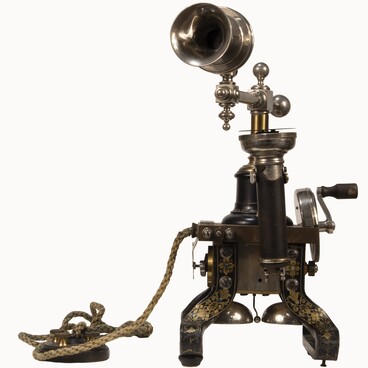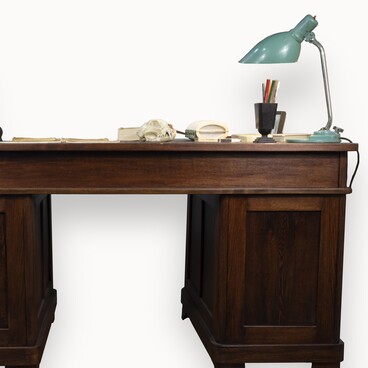The bronze belt overlay is a fragment of an embossed plaque with a zoomorphic image. Zoomorphism combines human and animal imagery, and ancient tribes used it to embody pagan gods and glorify the magical qualities of animals. Most often, it represented a man with wings, a bird’s head and a fish’s tail, as well as mythical creatures with attributes of various animals — a horse, a moose, a duck and a bear.
The belt plaque from the Museum of the History of Obninsk illustrates a Slavic mythological subject. The lower part of the plaque depicts a human figure, whose limbs resemble frog’s paws — probably it is the figure of a woman-frog. The Balkan Slavs and Balts still have myths in which the stories are associated with turning into a frog and a turtle. If a woman turns into a frog, it symbolizes a reward and blessing, and if she turns into a turtle — a punishment. This ancient myth is also used in the Russian fairy tale The Frog-Princess.
The plaque is embossed with a fine tool, similar to a blunt needle or an awl. The main figure and the surrounding frame are made with a double dotted line, the fingers — with a single one. On the back of the plaque are straight lines drawn with a sharp tool to pre-mark the pattern.
The plaque is one of the finds from the archaeological site of the Ogub settlement, located near the village of Strelkovka in the Kaluga region. The settlement was discovered 100 years ago and dates back to the early Iron Age — from the 1st century AD. There were settlements of Dyakovo, Zarubinets and Moshchiny cultures. The items belonging to these cultures are arranged in layers in the ground. Archaeologists have found traces of the Finno-Ugric and Russian Middle Ages: pottery, jewelry, iron knives, arrows and amulets.
The Ogub settlement is named after the Ogub river, where it is located on its right bank. In the early 1980s, the settlement was severely damaged as a result of farming practices. The Obninsk archaeological club “ARCOS” led by the scientist, local historian and amateur archaeologist Vladimir Sergeyevich Nesterov collected a number of exhibits. The collection was donated to the Museum of the History of Obninsk.
The belt plaque from the Museum of the History of Obninsk illustrates a Slavic mythological subject. The lower part of the plaque depicts a human figure, whose limbs resemble frog’s paws — probably it is the figure of a woman-frog. The Balkan Slavs and Balts still have myths in which the stories are associated with turning into a frog and a turtle. If a woman turns into a frog, it symbolizes a reward and blessing, and if she turns into a turtle — a punishment. This ancient myth is also used in the Russian fairy tale The Frog-Princess.
The plaque is embossed with a fine tool, similar to a blunt needle or an awl. The main figure and the surrounding frame are made with a double dotted line, the fingers — with a single one. On the back of the plaque are straight lines drawn with a sharp tool to pre-mark the pattern.
The plaque is one of the finds from the archaeological site of the Ogub settlement, located near the village of Strelkovka in the Kaluga region. The settlement was discovered 100 years ago and dates back to the early Iron Age — from the 1st century AD. There were settlements of Dyakovo, Zarubinets and Moshchiny cultures. The items belonging to these cultures are arranged in layers in the ground. Archaeologists have found traces of the Finno-Ugric and Russian Middle Ages: pottery, jewelry, iron knives, arrows and amulets.
The Ogub settlement is named after the Ogub river, where it is located on its right bank. In the early 1980s, the settlement was severely damaged as a result of farming practices. The Obninsk archaeological club “ARCOS” led by the scientist, local historian and amateur archaeologist Vladimir Sergeyevich Nesterov collected a number of exhibits. The collection was donated to the Museum of the History of Obninsk.


